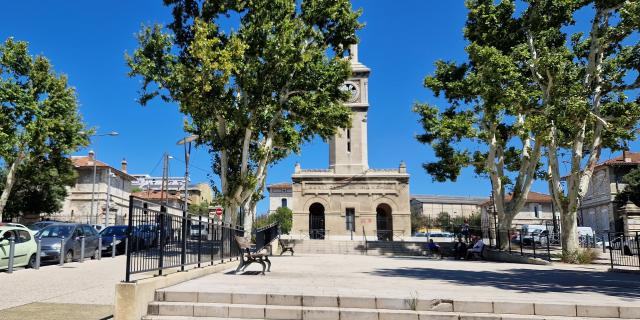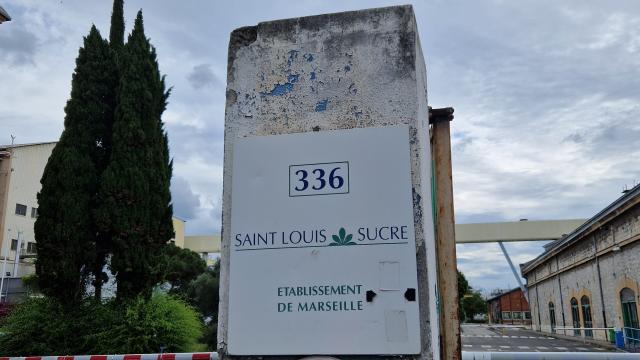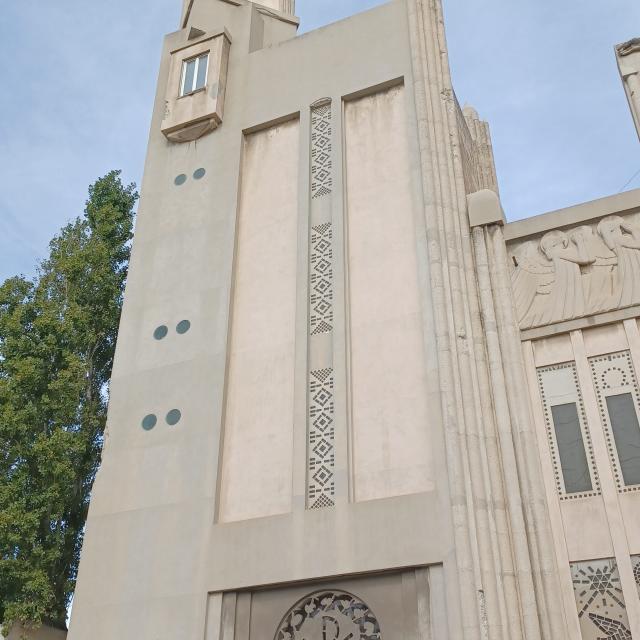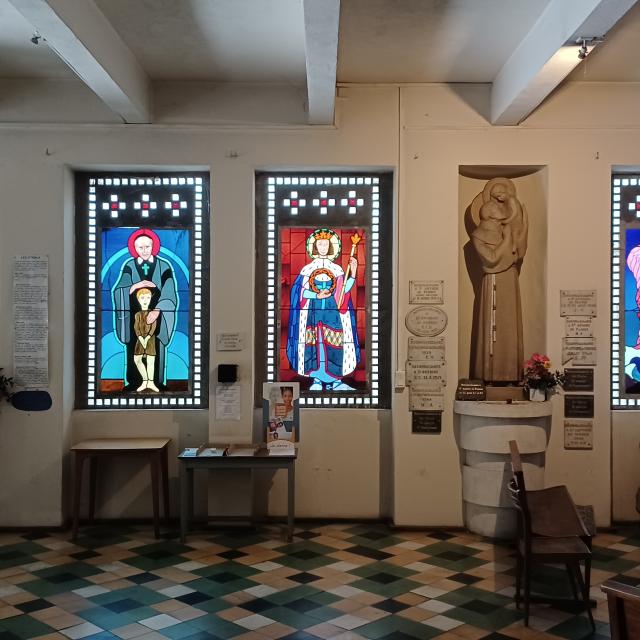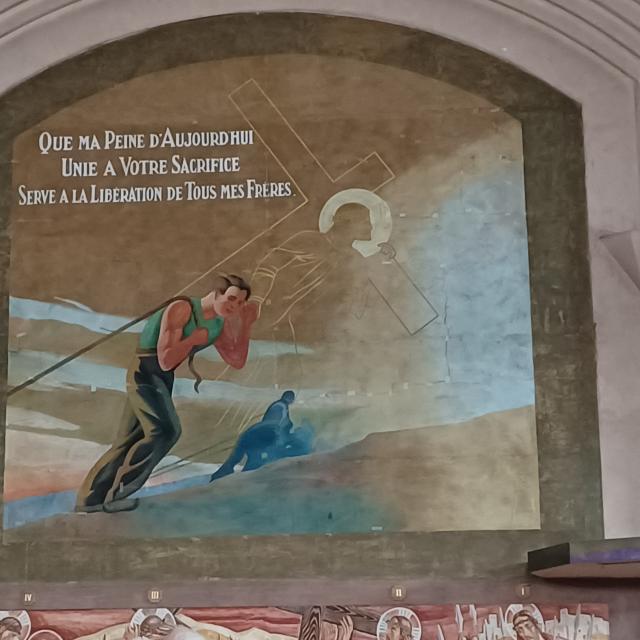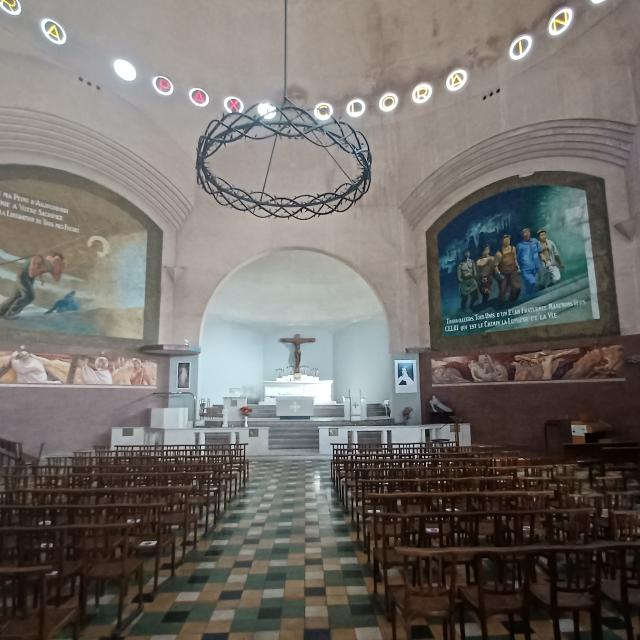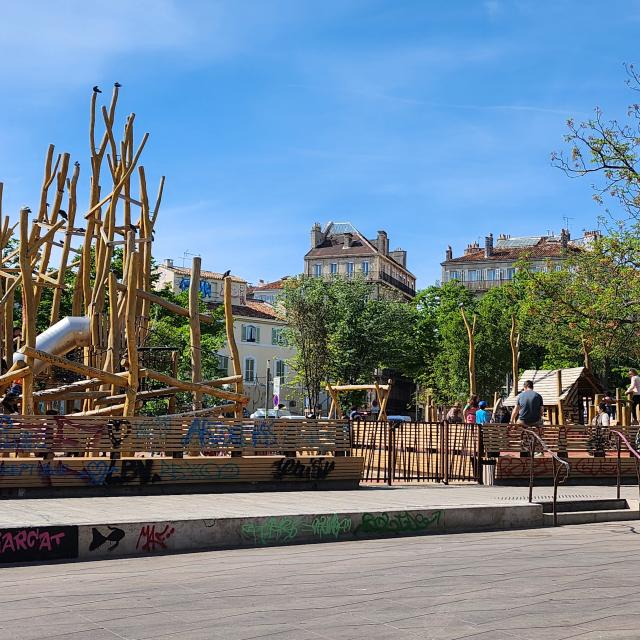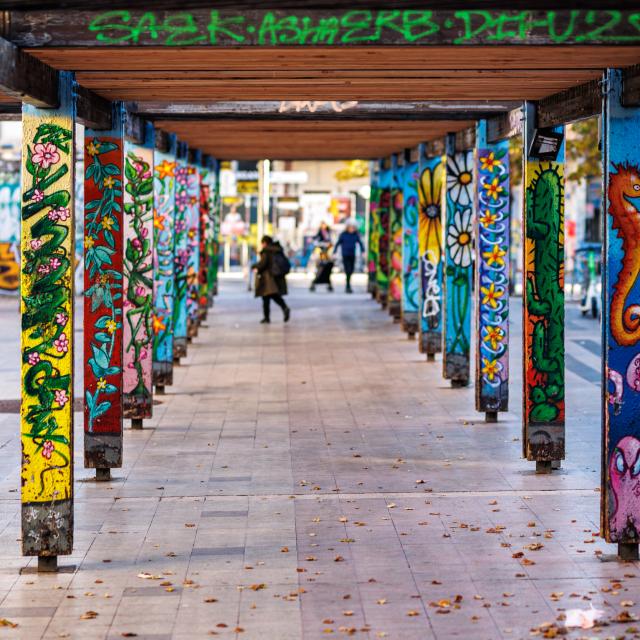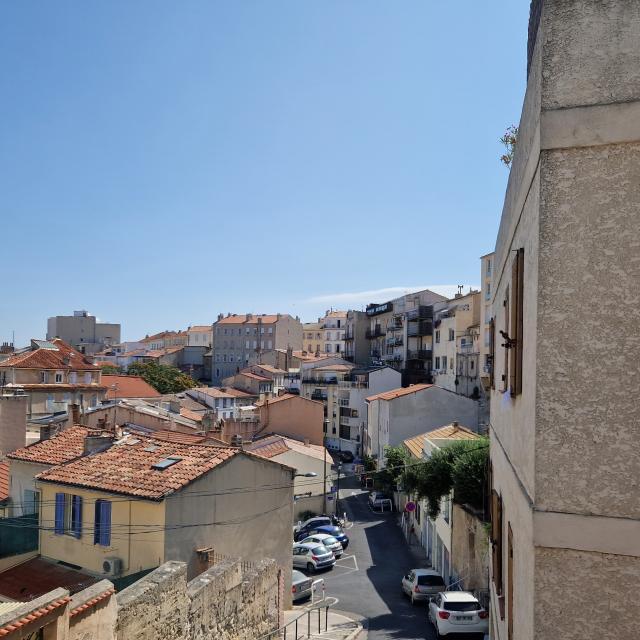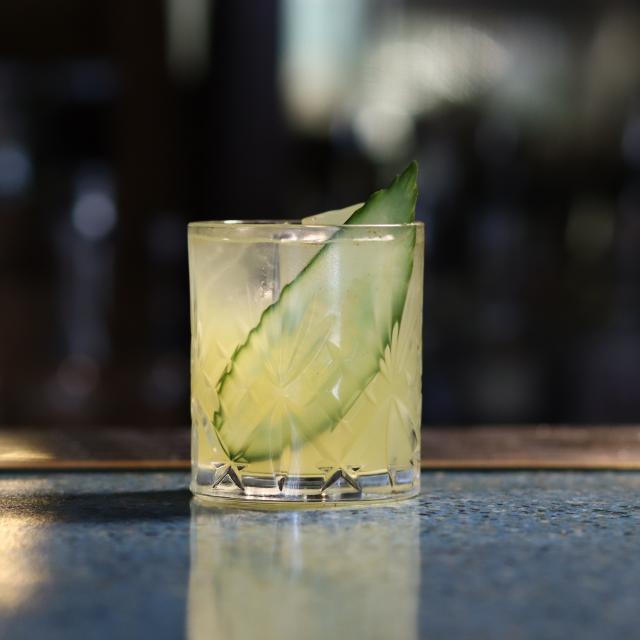The church of Saint-Louis
Located on the chemin de Saint-Louis in Le Rove, Saint-Louis church dates back to medieval times, as evidenced by the Pietà in the nave, the only surviving vestige of the Middle Ages. Between 1935 and 1939, it was rebuilt to the plans of architect Jean-Louis Sourdeau, following the design of Abbé Gabriel Pourtal. Due to the irregular pentagonal shape of the site, Sourdeau was unable to build the church in the traditional Latin cross style. He did, however, manage to use the entire plot of land with his unique design. The minaret-like peaks of the church and the large hemispherical concrete dome show Eastern and Mediterranean influences. The church has a total capacity of 900. In 1989, the Saint-Louis church was listed as a historic monument.
The exterior of the church comprises a bell tower, a nave topped by a cupola, a narthex and a chapel once dedicated to the Virgin Mary. All the structures and exterior decorations were built using reinforced concrete, a modern technique for the time. The 9-metre-high Archangel Gabriel at the top of the bell tower, created by the sculptor Carlo Sarrabezolles, bears witness to this method, which enabled the building to be completed quickly and cheaply.
Originally, the church was not supposed to have any statues. However, two statues can be seen inside the church of Saint-Louis: the first represents the Virgin and Child in plaster in the narthex, while the second features a white marble stele evoking Saint Fortunée in a niche-chapel in the nave. The work was carried out by sculptors François Carli, for the Virgin, and Louis Botinelly, for the stele of Saint Fortunée.
The church also features a Stations of the Cross fresco, the work of painter Jacques Martin-Ferrières, representing the original fourteen stations of this private and communal act of devotion. The narthex houses six stained glass windows symbolising Martin de Porrès, Joan of Arc, Vincent de Paul, King Saint Louis, the Archangel Saint Michael and Blessed Antoine Chevrier. Within the church, visitors can also admire eight stained glass windows dedicated to the history of the French king Saint-Louis, created in transparent mosaic by master stained glass artist Jean Gaudin.
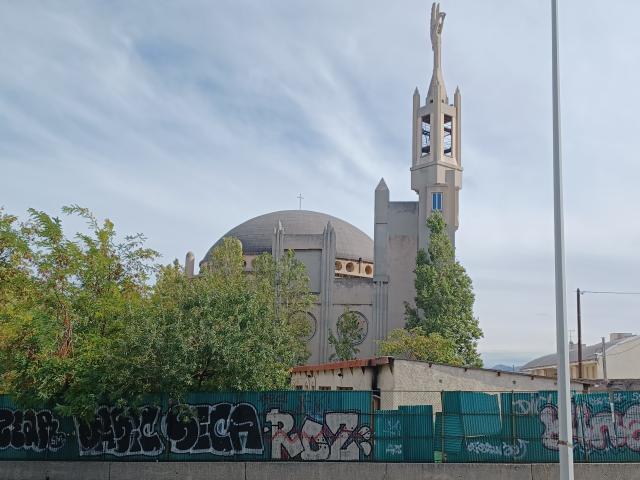 Eglise Saint Louis Mairie From 15 16 23
Eglise Saint Louis Mairie From 15 16 23